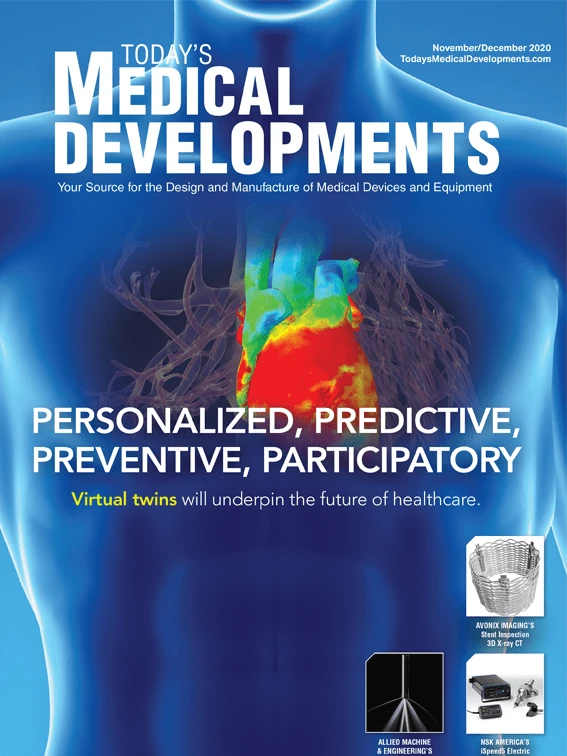
PHOTOS COURTESY OF UNITED GRINDING NA; HAMMILL MFG. CO
Hammill Medical leaders knew they were creating a bottleneck when they began making a complex medical part on older equipment several years ago, but volumes didn’t seem to justify buying a new machine. The part, however, was a hit, requiring the Maumee, Ohio-based company to revisit their decision.
Initially, Hammill reached out to United Grinding to discuss CNC surface grinding a complex part geometry for an innovative medical device they were developing. Application engineers developed a suitable grinding process and manufactured prototypes of the complex medical implant. With a good part in hand, Hammill Medical extended their deal with their client and secured a long-term contract to manufacture the part.
Though they considered a Blohm Profimat MT, officials instead opted to jury-rig an older surface grinder they owned. The grinding process became a production bottleneck for Hammill, taking about an hour and resulting in significant scrap and downtime for dressing and wheel issues. As the volume increased, the wheel would dull and break down, putting workpiece tolerances at risk. They also were scrapping more than 20% of material.
“It took four to five years before buying the Blohm,” says Hammill President John Hammill Jr. “If I could go back in time, I would buy it five years ago. It has opened the door to a whole new set of opportunities.”

Continuous dress
The Blohm Profimat MT machine allows continuous dress creep feed grinding (CDCF), a process designed for the aerospace industry that had not been used to manufacture this type of part. The process involves continuously dressing the wheel while grinding the part.
The surface and profile grinder worked as expected. Hammill no longer had to stop production for dressing, instead dressing and grinding simultaneously while cutting more aggressively.
As a result, Hammill has maintained profile shape and size of the part and reduced cycle time to about 10 minutes. They have significantly reduced downtime and scrap while producing a higher-quality part.

Longtime partners
The relationship between Hammill and United Grinding dates to the mid-1980s. Hans Ueltschi, VP of the Cylindrical Division Sales, installed Hammill’s first Studer grinder when he was a technician. Hammill says he has a deep appreciation for their partnership.
“United Grinding has a team of application engineers, and they are always looking for new ways to do things,” Hammill says. “The future is about doing things differently. You need these guys who have that expertise. That talent is scarce. United Grinding can add value as opposed to just selling you a machine.”

Future collaborations
Hammill continues to work with United Grinding to deliver better parts faster and compete for new ones in the tool and medical parts sectors.
With the Blohm purchase, United Grinding offered to follow up three months to six months later with an application engineer for additional training and process optimization.
“The future for us with United Grinding is more of the same,” Hammill says. “We are a resource for complex parts, so we look to United Grinding for grinding expertise. That’s where the partnership comes in. We learn from them.”

Explore the November December 2020 Issue
Check out more from this issue and find your next story to read.
Latest from Today's Medical Developments
- Teradyne Robotics debuted AI accelerator-powered solutions at NVIDIA GTC 2025
- Measurlabs opens a facility in California
- Sumitomo’s AC9115T & AC9125T – Turning grades for titanium
- #41 Lunch + Learn Podcast - SMW Autoblok
- Machine learning framework enhances precision, efficiency in metal 3D printing
- SkillMill – 60-year-old milling machine with digital twin
- Lumetrics’ OptiGauge II EMS
- EMI completes installation of 128-axis CNC turning & milling machine







